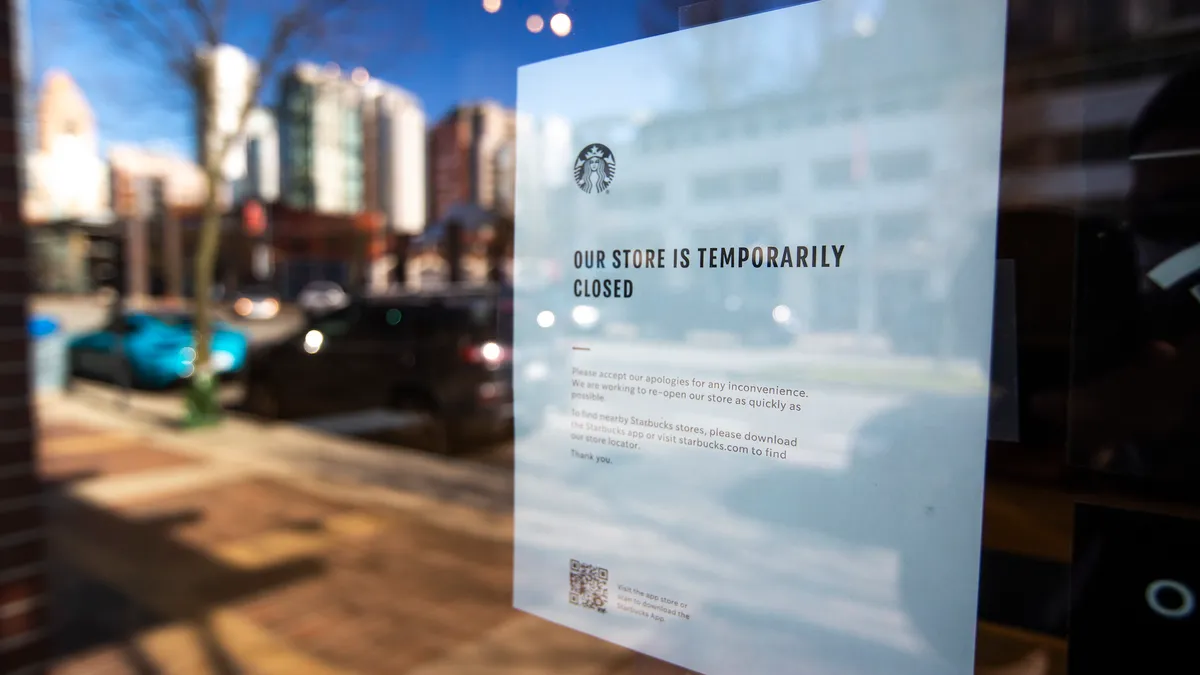Dive Brief:
- Chief marketing officers this year could see declines to their salaries with 84% saying in a survey that their compensation is pegged to business improvements. Their take-home pay likely will decline because of the coronavirus pandemic's negative effects on the economy, per an announcement from the CMO Council, a global network of senior marketing executives.
- Despite a challenging outlook, the CMO Council found an improvement in compensation for female marketers last year. Female marketing executives last year reported average salaries of $212,898 and bonuses of $56,229, while male executive earned an average of $209,525 and bonuses of $53,388, according to data on the organization's CMOCompensation.com website.
- More than 65% of CMOs had expected a raise this year, though the CMO Council warned that its survey was taken before the World Health Organization (WHO) had declared that the novel coronavirus had become a pandemic. Fifty-seven percent of CMOs had said they were dissatisfied with their current compensation after reaching their marketing goals last year, per survey results cited in the CMO Council's report titled "CMO Compensation: Erosion, Stagnation or Elevation?"
Dive Insight:
The CMO Council expresses cautious optimism about the status of marketing executives, who believe they have gained recognition in the C-suite for creating value for businesses, while diversity efforts have improved the compensation for female executives. While the coronavirus pandemic and its economic fallout were unforeseen events when the CMO Council surveyed 150 marketing executives earlier in the year, there are some bright spots for CMOs. Three quarters of CMOs said they had gained stature and influence in the past year, while 83% said executive teams think that marketing is "a vital contributor to business value." Only 15% of CMOs said they failed to meet marketing goals and business objectives in 2019, the report found.
It's not completely clear why female executives earned more than their male counterparts, though the CMO Council notes that larger organizations tend to pay better than smaller companies. The report supports other research to indicate that major advertisers have undertaken efforts to hire women as CMOs. The percentage of women CMOs at the 100 most advertised brands rose to 43% last year from 36% in 2018 and 28% in 2017, according to executive search firm Spencer Stuart. The percentage of women CMOs who were new to the job rose to 48% last year from 44% in 2018 and 38% in 2017. A continuation of those trends could bring more women into CMO roles this year.
CMOs who report directly to CEOs are more likely to be paid better than those who don't, and the most highly paid CMOs have strong relationships with CFOs and CIOs, according to academic data cited by the CMO Council. CMOs who make more than $500,000 a year are more likely to report directly to the CEO, and tend to focus on business performance goals like top-line growth, market share and efficiencies. Top earners also focus on restructuring marketing departments to drive results, improving accountability and building digital capabilities. While the pandemic and economic slowdown likely will make top-line growth more challenging for many companies this year, other benchmarks like market share and digital sales growth might become more important in motivating marketing executives, the study suggests.
The cautiously optimistic outlook for CMOs comes they face challenges in reshaping their roles within organizations. The average tenure of CMOs at major U.S. consumer brands has declined to 43 months from 44 months, according to Stuart Spencer research cited by CMO Council. The finding is another sign that the CMO role is in transition, which may bring fresh opportunities. Last fall, Forrester predicted that the CMOs will find themselves in a "desperate fight for survival" in 2020. The key will be establishing control over the customer experience to provide value, per the report.














